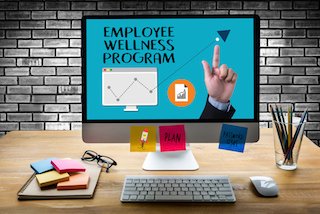With the future of the Affordable Care Act (ACA) and its Cadillac Tax unclear, employers are looking beyond substantial health plan design changes to other strategies that will help them control costs, according to the 2017 Medical Plan Trends and Observations Report released March 1 by DirectPath and CEB.
With high deductible health plans (HDHPs) proving to not be a “silver bullet” for health care cost containment, employers are incorporating solutions like health savings accounts (HSAs), wellness incentives, price transparency tools and alternative care options to reduce costs.
The report, which analyzed more than 975 employee benefit health plans, highlights the top 10 trends in employers’ 2017 health care strategies across three categories – plan design, cost savings mechanisms and care options.
More key findings from the report:
- Price transparency tools drive savings– 51% of employers offer a price transparency tool to help employees choose the service or product best for them, and 18% plan to add such tools in the next three years, according to CEB. In a review of price comparison requests, these services resulted in an average employee savings of $173 per procedure and average employer savings of $409 per procedure. Price shopping for even routine procedures often reveals substantial cost differences even in the same network and/or geographic area.
- Employers turn up the dial on surcharges– In an effort to reduce costs and the administrative burden of tracking coverage for non-employees, some employers are imposing surcharges on spouses who have the opportunity to elect coverage elsewhere. While the percentage of organizations with spousal surcharges remained static (26% in 2017, as compared to 27% in 2016), average surcharge amounts increased dramatically to $152 per month, a more than 40% increase from 2016.
- Usage of wellness incentives rise– The majority (58%) of 2017 plans offer some type of wellness incentives, up from 50% in 2016. Employers are getting creative with their incentives to drive participation, offering rewards including paycheck contributions, plan premium discounts, HSA and HRA contributions and reduced office visit co-pays.
- Barriers remain to broad adoption of telemedicine– More than a third of organizations offer telemedicine, yet are struggling to drive use due to a combination of low employee awareness and perceived inconvenience. More than 55% of employees with access to telemedicine programs are not aware of their availability, and nearly 60% of employees who have telemedicine programs do not feel they are easy to access, according to a separate survey recently conducted by CEB.
- Specialty medication becomes more expensive– Prescription drugs continued their double-digit increase in most drug categories. The average cost of specialty drugs that treat rare and complex conditions increased by more than 30%. This is in line with research conducted by the National Business Group on Health, which found nearly one-third of organizations indicated that specialty pharmacy was their highest driver of health care costs last year.
- HSAs remain popular– Of the employers analyzed, 67% offer HSAs, a more popular option than Health Reimbursement Arrangements (HRAs), which are employee-funded and are offered by just 15% of employers. And, while use of high-deductible plans seem to have (at least temporarily) plateaued under the current uncertainty around the future of the ACA, employer contributions to HSAs increased almost 10%.
“In recent years, we saw more employers adopt HDHPs as a hedge against the impending Cadillac Tax. While it’s likely that tax will now be repealed, the need for employers to control health care costs hasn’t diminished, with employers expecting costs to continue rising by about 6% this year,” said Kim Buckey, vice president of client services, DirectPath. “Our annual medical trends report shows that employers are seeking more diverse and effective health care solutions in an effort to control health care costs – but they won’t be successful if they don’t engage employees on how to maximize these choices via personalized education and price transparency. We look forward to partnering with more employers in 2017 to help them make the best decisions for all parties.”
CEB’s HR Practice Leader Brian Kropp added, “As uncertainty around the health care landscape continues, employers must partner with employees to help them navigate the current health care options to both choose the right plan for them and ensure they get the care they need at the best possible cost within their current plan.”
To download the full report, visit this page.
Research Methodology: The report is based on an analysis of about 975 employee benefit health plans drawn from The Lab®, the industry’s only medical health plan benchmarking database, powered by DirectPath and CEB research. The Lab supplies real-time access to in-depth plan and pricing information, helping benefits teams compare their plans with other organizations by industry, geography and company size. DirectPath offers companies the ability to benchmark their plans against industry comparisons in its Lab.











